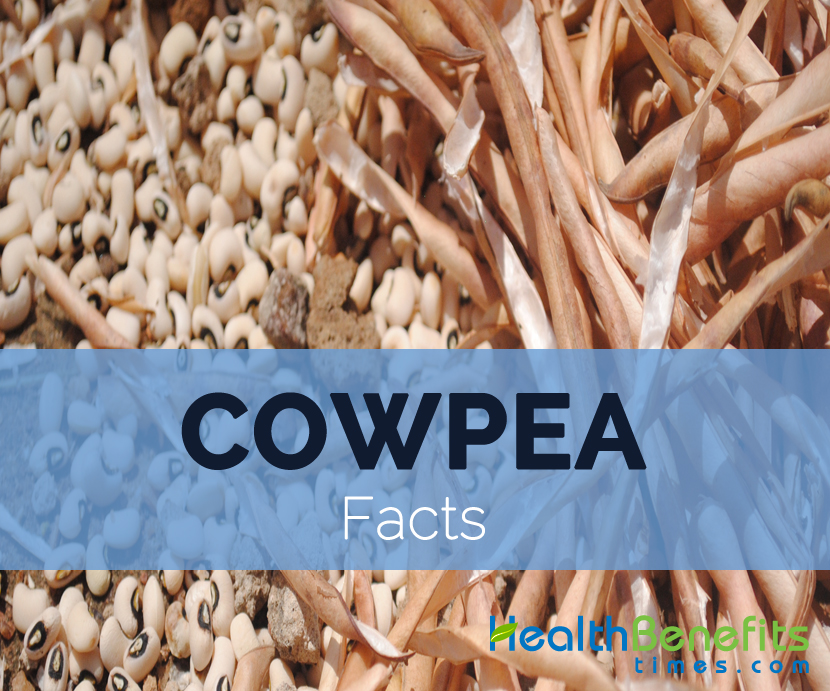 It is the legume or annual crops which are grown all over the word. It is loaded with nutrition. Cowpea is found in various varieties which differ in colors and sizes. It is also used as a fodder for animals. It also enhances to fix the nitrogen.
It is the legume or annual crops which are grown all over the word. It is loaded with nutrition. Cowpea is found in various varieties which differ in colors and sizes. It is also used as a fodder for animals. It also enhances to fix the nitrogen.
| Name | Cowpea |
|---|---|
| Scientific Name | Vigna unguiculata |
| Native | Africa and widely grown in Africa, Southeast Asia, southern United States and Latin America. The cowpea was introduced in India and Europe around 200 BC and 300 BC respectively. |
| Common/English Name | Bachapin Bean, Black Eyed Dolichos, Black-Eyed Bean, Common Cowpea, Cowgram, Black Eyed Cowpea, China Bean, Crowder Pea, Black-Eyed Pea, Cowpea, Crowder Bean, Kafir Bean, Field Pea, Macassar Bean Marble Pea, Cultivated African Cowpea, Red Pea, Southern Pea, Poona Pea, Rope Bean. |
| Name in Other Languages | Afrikaans: Akkerboon, Koertjie; Arabic: Mash, Lûbyâ’ Baladî; Argentina: Poroto Caupi; Bolivia: Frijol Camba , Cumandá; Brazil: Feijão De Corda, Feijão Caupe,; Central America: Frijol De Costa; Chinese: Da Jiao Dou, Jiang Dou; Columbia: Frijol Caupi; Cuba: Frijol Carita; Danish: Vignabønne, Koaert; Domincan Republic: Caupi, Anconi; East Africa: Kunde; Ecuador: Tumbe; Finnish: Lehmänpapu; French: Dolique À Oeil Noir; German: Augenbohne, Langbohne; Honduras: Frijol Alacin; India:- Bengali: Ghangra, Hindu: Chauli, Kulath, Kannada: Alasabde, Alasande, Malayalam: Perumpayar, Marathi: Chavali, Alasunda, Sanskrit: Rajamasah, Mahamasah, Tamil: Kaattu Ulundu, Thattapayir, Telugu: Kaaraamanulu, Alasandalu; Indonesia: Kacang Tunggak; Italian: Fagiolino Piccolo, Fagiolo Dall’occhio Nero; Japanese: Sasage; Kenya: Likhubi; Khmer: Sândaèk Ângkuy, Sândaêk Kâng; Korean: Tongpu; Laotian: Thwàx Do; Latin America: Caupi; Malaysia: Kacang Bol, Kacang Toonggak; Mexico: Chicharo De Vaca, Frijol Yorimón; Nicaragua: Frijol Alacin Frijol De Vara; Panama: Frijol Ojo Negro; Peru: Frijol Castilla, Chiclayo; Philippines:- Bisayan: Batong, Otong, Kibal, Tagalog: Sitaw-Turo, Paayap,; Portuguese: Feijão-Frade, Feijão-Miúdo; Russian: Vigna Kitaiskaia; Senegal: Niao, Seub; Spanish: Caupi, Chicharo Tropical, Costeñ; Swahili: Kunde; Swedish: Vignaböna; Thai: Tua Dam; Turkish: Börülce; Uganda:- Acholi: Boo, Ngor, Alur & Jonam: Amuli, Obo, Bugisu: Likote, Kakwa: Laputu, Nyele, Karamajong: Maruet “Wild”, Langi: Eggobe, Mpindi, Luganda: Bojo, Runyankore: Enkoole Omugobe, Runyoro: Omugobe, Rutooro: Omugobe, Teso: Lmere, Eboo; Venezuela: Frijol; Vietnamese: Dôu Den, Dôu Tua; West Africa: Ewa, Wake; Zulu: Imbumba, Isihlumaya |
| Plant Growth Habit | Herbaceous legume which is grown annually |
| Growing Climate | Warm and enough rainfall |
| Soil | Well-drained, sandy soils or sandy loams |
| Plant Size | 24 inches |
| Lifespan of seed | 5 years |
| Root | Taproot and abundant lateral roots spreading in a soil |
| Branchlets | Branchless |
| Stem | Smooth, striate, hairy, purple shades and length: 3 m |
| Leaf | Dark green, lanceolate- ovate, shiny to dull and 10 cm long |
| Edible parts of the plants | Roots: Consumed roasted Green leaves: Boiled or fried Immature pods: Boiled or steamed Seeds: Consumed directly Green seeds: Roasted |
| Flower | Bell shaped, dirty yellow, white, pale blue, pink, or purple |
| Seed shape & size | Kidney shaped, Length: 6–12 mm |
| Seed color | Green, red, white, cream, black , and buff brown |
| Pod shape and size | Slightly curved and cylindrical, length: 6 to 10 inch |
| Pod color | Green, purple or yellow |
| Flavor/aroma | Nutty |
| Varieties/Types |
|
| Season | Warm-season, temperate zones and humid tropics |
| Major Nutritions | Vitamin B9 (Folate, Folic acid) 356 µg 89.00% Iron, Fe 4.29 mg 53.63% Copper, Cu 0.458 mg 50.89% Phosphorus, P 267 mg 38.14% Tryptophan 0.162 g 36.82% Manganese, Mn 0.812 mg 35.30% Histidine 0.41 g 33.28% Isoleucine 0.537 g 32.12% Valine 0.629 g 29.78% Total dietary Fiber 11.1 g 29.21% Vitamin B1 (Thiamin) 0.345 mg 28.75% Threonine 0.503 g 28.58% Leucine 1.012 g 27.38% Carbohydrate 35.5 g 27.31% Lysine 0.894 g 26.73% |
| Health Benefits |
|
| Calories in 1 cup (171 g.) | 198 Kcal. |
| Traditional uses |
|
| Precautions | One should consult a diet professional before consuming cowpeas. |
| How to Eat |
|
| Other Facts |
|

